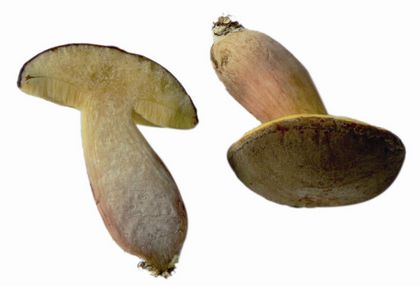Gathering mushrooms in Russia is a real national passion, which takes hold of everyone young and old in the autumn months. Already when June rolls around, the Russians go out hunting for mushrooms – the “spikes” – the cepe, aspen mushrooms, rough boletus, yellow boletus and even honey fungus.
Take a hamper, run to the forest and stay alert. The spikes’ life is short – a week, ten days maximum. Then everything descends until mid-August. And that’s when the real “mushroom hunt” starts, which continues deep into au tumn. The capital’s residents know that it’s mushroom season by going to their country houses and seeing the old women standing along the highways with hampers full of fresh mushrooms.
The first mushrooms to appear are the chanterelle, which are then followed by the more distinguished mushrooms. Such mushrooms in Russia, unlike in Switzerland and France, include not only the famous “cep” (which means “white” translated from French).
The “white”, in particular its variation as the boletus with the dark brown cap, enjoys special respect. It can be fried with cream or used for a marvellous mushroom soup, or marinated. It’s a pure delicacy. The aspen mushrooms, rough boletus, chanterelle, yellow boletus, lurid boletus and sphagnum bugs are also respected in Russia. They can all be fried together with the less distinguished mushrooms like goatling mushrooms, russules and even honey fungus. But the honey fungus, which appear in the Russian forests by the masses at the end of autumn, are normally salted and marinated.
They should be fried apart from other mushrooms.
There are also numerous types of pore boletus, which are pickled and are indispensable with vodka. These are: milk mushrooms, orange milk mushrooms, “red mushrooms”, sharp agarics, delphacid plant hoppers, sinushka, skripitsa, which first of all should be soaked, washed several times and only then pickled (in barrels for best results). The Russian forests contain over 100 different types of edible mushrooms.
Unlike Western European mushroom fans, Russians are not very fond of farmer champignons, oyster mushrooms or France’s beloved “trompettes de la mort”.
Russians hunt mushrooms with their entire family. Here and there you can hear the mushroom collectors calling out to each other. Voices of children in particular can definitely be heard. People learn from childhood how to recognize mushrooms and not get lost in the forest. In Russia and especially in Siberia, it is more than easy to get lost.
For Russians, mushroom hunting is not only a hobby, but a very serious trade. Though the future may be uncertain, it’s quite safe to say that mushrooms will always be a delicacy and in stock in case of any shortage.
Families who are mushroom fans keep their mushrooms dried by putting them on a thread; after drying, the mushrooms are kept in special textile bags until the next season. Dry mushrooms are good for soups, mushroom caviar, or added into pelmenies (ravioli) or mushroom pies. This summer was dry, but rains came at the end of July and beginning of August. And that’s when every weekend thousands of people rush to collect mushrooms. There is enough for everyone, even in the forests of the Moscow region. If you venture farther, you can find so many mushrooms that you will need sacs to carry them all. With the development of a market economy in many mushroom regions, special factories appeared for mushrooms processing, which receive mushrooms from those who work in that trade. The products of such factories are: salted, pickled and dry oyster mushrooms and pelmenies with mushrooms.
These products are distributed throughout all of Russia and even ex por ted. Russian ethnic cuisine and baking are unthinkable without mushrooms.













